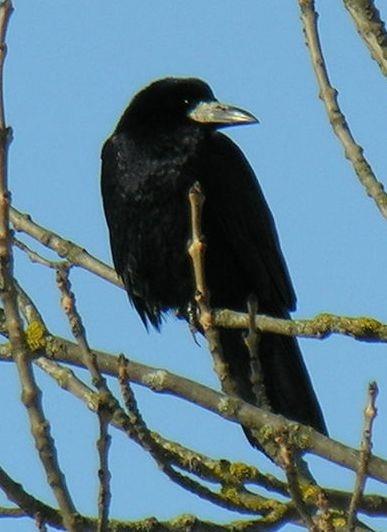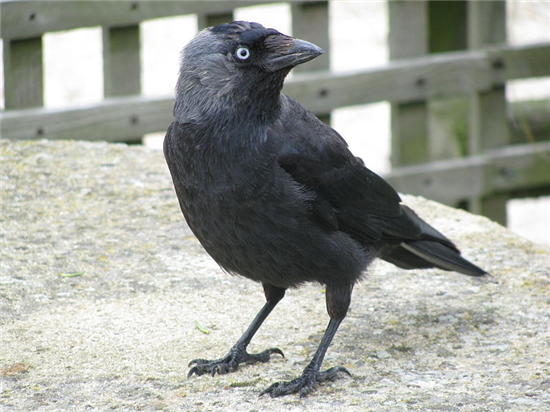A Ranger Writes
Countryside Ranger Richard English clears up any corvid confusion and celebrates these beautiful birds.
February’s here and with any luck the first stuttering signs of spring should be starting to appear. Despite this, things can be a bit bleak - the trees are mostly still bare and, although the nights are getting a bit shorter, there’s still a gloomy, wintery feel to many days. Why not celebrate the bleakness, whilst also celebrating a group of birds often associated with the “dark side”.
I’m talking about crows and before we go any further, we should clear up some confusing terminology. The term “crow” can refer to a particular species, the carrion crow, but it can also be used to refer to the crow family, which includes carrion crows, rooks, ravens, jackdaws, magpies, jays and choughs. The family grouping should really be referred as corvids – this not only avoids confusion, but also makes you sound all scientific and clever.
Rooks and carrion crows are similar in size and shape. They can be told apart by the rook’s light-grey face and bill, which contrasts with the completely black plumage of the carrion crow. Rooks also have scruffy-looking leg feathers, giving them the appearance of wearing baggy trousers. Sadly, it’s not always possible to get such a good view of birds; they may be flying overhead, or in bad light or just far away. So, a decent rule of thumb is that if there are a lot of them, they’re probably rooks; if there are only a few, they’re more likely to be carrion crows, which are less social. This doesn’t always work, since carrion crows will form flocks, but it’s not bad as a guideline.
 Rook
Rook
 Carrion Crows
Carrion Crows
Large flocks of corvids are likely to contain more than one species, often rooks and jackdaws. The presence of the latter is often indicated by their harsh tchack-tchack call, from which they get their name. Jackdaws are noticeably smaller than rooks and have a silvery-grey sheen to the back of the head, neck and throat. They also have light grey eyes, unlike other UK corvids which have black eyes.
 Jackdaw
Jackdaw
Corvids are generally not fussy eaters – they have been recorded shoving their bills into cowpats to pick out insect larvae. Carrion crows, jackdaws and magpies will eat pretty much anything, while rooks tend to feed on grain, seeds and invertebrates. This ability to eat a range of food is part of the reason corvids are so successful. It’s also partly why some people really don’t like them. Corvids, especially magpies, will take other bird’s eggs or young from the nest, which can be a distressing sight for bird lovers. However, the RSPB and other authorities have undertaken extensive research which suggests that magpie predation does not have a significant effect on songbird numbers.
Now let’s consider the positives. Corvids are, without doubt, the most intelligent of our birds. There isn’t room here to cover all the experimental work, but many experts would argue that corvids are more intelligent than most mammals. They also exhibit complex social behaviour and communication skills. So, instead of demonising our crows, perhaps we should respect them as the intelligent, resourceful and, dare I say it, beautiful birds that they are.
Follow our Countryside Rangers on Facebook for images of, and insights into, East Lothian’s beautiful wild spaces.